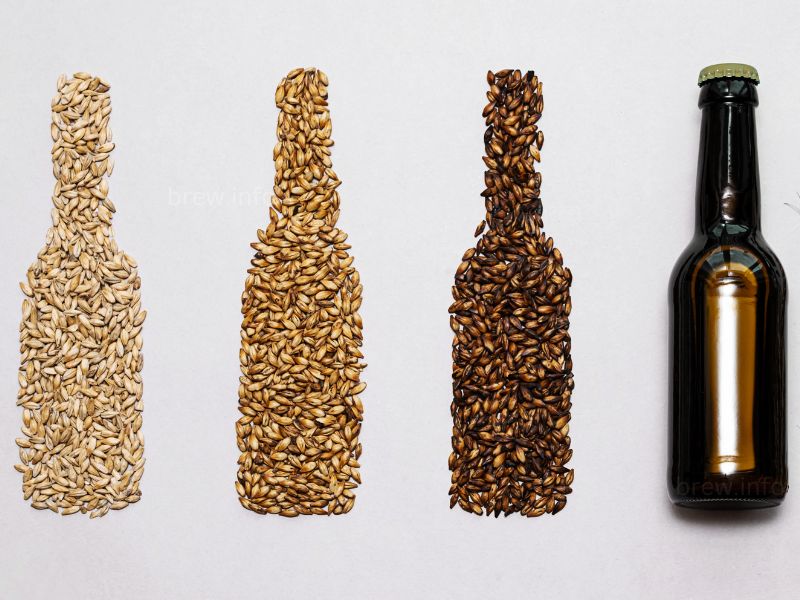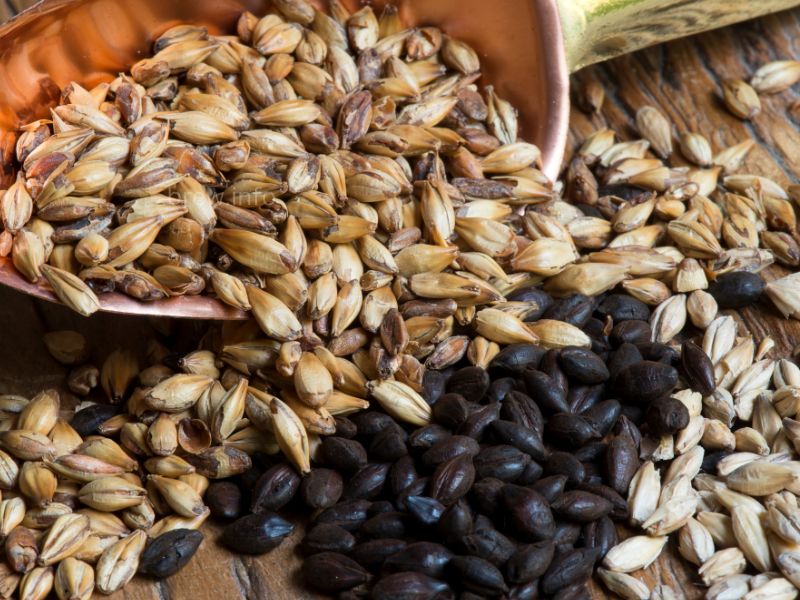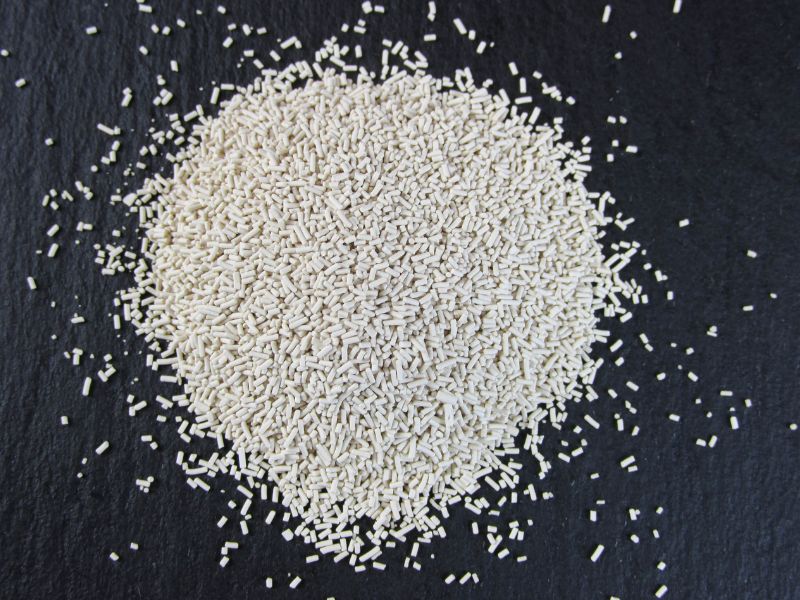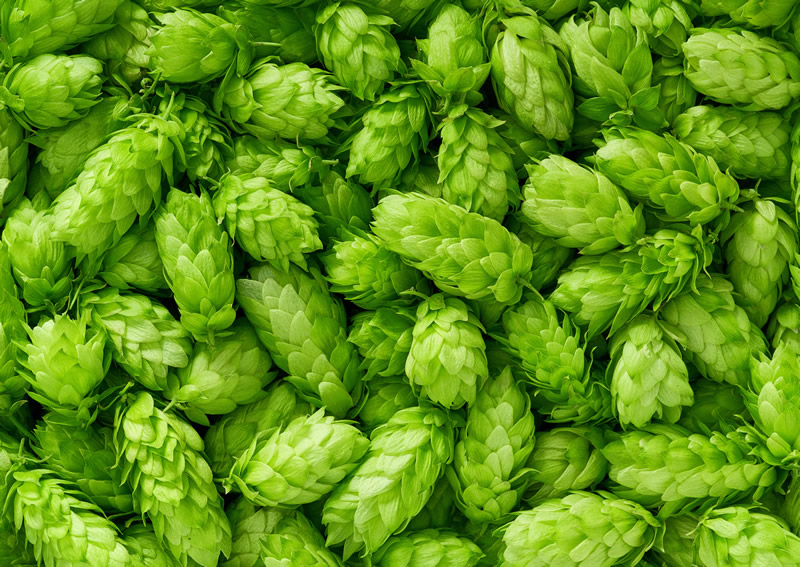Malts are partly germinated grains that have been dried. The malting process stimulates enzymes in the grain, converting starches into sugars that yeast may consume during fermentation. The resultant malted grains have a diverse taste character and offer essential sugars for fermentation.
Brewers typically employ two types of malt: malted grains and malt extracts. Malted grains are whole or crushed grains that are used to produce mash, which is a grain and hot water combination. During the mash process, enzymes in the grains transform the starches in the grains into fermentable sugars. Brewers often utilize a variety of malted grains to obtain a certain flavor and color character in their beer.
In contrast, malt extracts are concentrated versions of malted grains that have been treated to remove the fermentable sugars. Malt extract is classified into two types: liquid and dry. A thick syrup created by evaporating water from the mash is called liquid malt extract. Dry malt extract is created by spraying liquid malt extract over a heated surface and allowing the water to evaporate.
Malt extracts are a popular choice for new brewers since they are simple to use and need less equipment than whole-grain brewing. Many skilled brewers, on the other hand, prefer to use whole grains since they give them greater control over the brewing process and can generate more nuanced tastes in the beer.
Overall, malted grains and malt extracts are important elements in the brewing process, and each has benefits and drawbacks. Whether to use whole grains or extracts is a matter of personal preference and the intended outcome for the beer being brewed.
Malts and Adjuncts
Below is a list of the most common malts and adjuncts used in brewing. Let me know if something should be added or updated.
| Grain | Description | Usage | Lovibond | Beer Styles | Commercial Examples |
|---|---|---|---|---|---|
| Pilsner Malt | Light in color, provides a crisp, clean flavor | Base malt | 1.5-2.5 | Pilsner, Lager, Kolsch, Blonde Ale | Pilsner Urquell, Bitburger |
| Pale Ale Malt | Toasty, biscuity flavor | Base malt | 2.5-4.0 | Pale Ale, Amber Ale, IPA, Brown Ale | Sierra Nevada Pale Ale, Fat Tire Amber Ale |
| Munich Malt | Rich, malty flavor | Base malt | 8.0-10.0 | Oktoberfest, Bock, Amber Ale | Samuel Adams Oktoberfest, Ayinger Celebrator Doppelbock |
| Vienna Malt | Malty flavor with a slightly toasty character | Base malt | 3.5-4.5 | Vienna Lager, Oktoberfest, Amber Ale | Negra Modelo, Great Lakes Eliot Ness |
| Wheat Malt | Creamy mouthfeel, subtle wheat flavor | Base malt | 2.0-3.0 | Wheat Beer, Weissbier, Witbier | Schneider Weisse, Allagash White |
| Rye Malt | Spicy, peppery flavor with a dry character | Specialty malt | 3.0-5.0 | Rye Beer, Roggenbier | Founders Red's Rye IPA, Two Roads Rye 95 |
| Crystal Malt | Sweetness and body | Specialty malt | 10.0-120.0 | Amber Ale, Brown Ale, IPA, Stout | Bell's Amber Ale, Goose Island IPA |
| Chocolate Malt | Chocolate and roasted flavor | Specialty malt | 350-500 | Stout, Porter, Brown Ale | Founders Breakfast Stout, Samuel Smith's Taddy Porter |
| Black Patent Malt | Strong roasted flavor, black color | Specialty malt | 500-600 | Stout, Porter, Black IPA | Guinness, Stone Sublimely Self-Righteous Black IPA |
| Acidulated malt | Adds a tart flavor and lowers mash pH | Specialty malt | 2.0-3.0 | Berliner Weisse, Gose, Pilsner | Weihenstephaner Hefeweissbier, North Coast Scrimshaw Pilsner |
| Aromatic malt | Adds a strong malt aroma and flavor | Specialty malt | 20.0-25.0 | Amber Ale, Belgian Dubbel, Scottish Ale | Samuel Adams Boston Lager, Duvel Belgian Golden Ale |
| Biscuit malt | Adds a toasty, biscuity flavor and aroma | Specialty malt | 22.0-28.0 | Belgian Dubbel, Belgian Tripel, Brown Ale | Fuller's London Pride, Chimay Red |
| Brown malt | Darkens beer and adds a nutty, toasty flavor | Base malt | 50.0-60.0 | Brown Ale, Porter, Stout | Samuel Smith's Nut Brown Ale, Guinness Draught |
| Cara Munich | Adds a malty, caramel flavor and reddish color | Specialty malt | 35.0-45.0 | Amber Ale, Bock, Oktoberfest | Märzën, Hofbräu Oktoberfestbier |
| Cara Vienna | Adds a sweet, malty flavor and light red color | Specialty malt | 20.0-25.0 | Vienna Lager, Oktoberfest | Märzën, Great Lakes Eliot Ness |
| Caramel Wheat | Adds a sweet, caramel flavor and creamy texture | Specialty malt | 45.0-60.0 | Wheat Beer, Dunkelweizen, Belgian Witbier | Ayinger Bräu Weisse, Allagash White |
| Chocolate rye malt | Adds a chocolatey, spicy flavor and aroma | Specialty malt | 250.0-300.0 | Rye Beer, Brown Ale, Stout | Bell's Porter, Founders Red's Rye IPA |
| Chocolate wheat malt | Adds a chocolatey, roasted flavor and creamy texture | Specialty malt | 400.0-500.0 | Porter, Stout, Dunkelweizen | Deschutes Black Butte Porter, Young's Double Chocolate Stout |
| Coffee malt | Adds a coffee-like, roasted flavor and aroma | Specialty malt | 500.0-600.0 | Stout, Porter, Belgian Dubbel | Founders Breakfast Stout, Brooklyn Black Chocolate Stout |
| Carapils malt | Adds body, foam retention, and a slight sweetness | Specialty malt | 1.0-2.5 | Pilsner, Belgian Tripel, American Pale Ale | Monchshof Kellerbier, Chimay Cinq Cents |
| Flaked barley | Adds a creamy texture and head retention | Adjunct | 1.5-2.5 | Irish Stout, English Bitter, Brown Ale | Guinness Draught, Fuller's ESB |
| Flaked maize | Adds a light, clean flavor and pale color | Adjunct | 0.5-1.0 | American Lager, Cream Ale, Light Beer | Budweiser, Coors Light |
| Flaked oats | Adds a creamy texture and mouthfeel | Adjunct | 1.0-2.5 | Oatmeal Stout, Belgian Witbier, American IPA | Samuel Smith's Oatmeal Stout, Ommegang Hennepin |
| Flaked rye | Adds a spicy flavor and silky texture | Adjunct | 2.0-3.0 | Rye Beer, Saison, Roggenbier | Bell's Rye |
| Grain | Description | Usage | Lovibond | Beer Styles | Commercial Examples |
| Flaked wheat | Adds a crisp texture and head retention | Adjunct | 1.5-2.5 | Witbier, Belgian Tripel, American Wheat Beer | Hoegaarden Witbier, Allagash White |
| Golden promise malt | Adds a sweet, biscuity flavor and light color | Base malt | 2.5-3.0 | Scottish Ale, English Bitter, American Pale Ale | Edinburgh Castle, Theakston's Old Peculier |
| Honey malt | Adds a honey-like sweetness and malty flavor | Specialty malt | 20.0-25.0 | Scottish Ale, Belgian Dubbel, Belgian Tripel | Flying Dog Doggie Style Classic Pale Ale, Unibroue Maudite |
| Marris otter malt | Adds a rich, nutty flavor and golden color | Base malt | 2.5-4.0 | English Bitter, English Pale Ale, Belgian Blonde | Boddingtons Pub Ale, Samuel Smith's Old Brewery Pale Ale |
| Mild ale malt | Adds a malty flavor and light color | Base malt | 3.0-4.0 | Mild Ale, Scottish Ale, English Bitter | Fuller's London Pride, Theakston's Mild |
| Pale 2-row malt | Adds a clean, neutral flavor and light color | Base malt | 1.5-2.0 | Pilsner, American Pale Ale, Blonde Ale | Budweiser, Sierra Nevada Pale Ale |
| Pale 6-row malt | Adds a grainy, slightly nutty flavor and light color | Base malt | 1.5-2.0 | American Lager, Cream Ale, Light Beer | Genese Cream Ale, Schell's Light |
| Peated malt | Adds a smoky, peaty flavor and aroma | Specialty malt | 2.5-3.0 | Scotch Ale, Smoked Porter, Rauchbier | Laphroaig, Schlenkerla Rauchbier |
| Roasted barley | Adds a dry, roasted flavor and dark color | Base malt | 300.0-500.0 | Stout, Porter, Irish Red Ale | Guinness Draught, Murphy's Irish Stout |
| Smoked malt | Adds a smoky flavor and aroma | Specialty malt | 2.0-9.0 | Rauchbier, Smoked Porter, Scottish Ale | Aecht Schlenkerla Rauchbier, Alaskan Smoked Porter |
| Special B malt | Adds a raisin-like sweetness and dark color | Specialty malt | 140.0-155.0 | Belgian Dubbel, Belgian Tripel, Belgian Dark Strong Ale | Rochefort Trappistes 8, St. Bernardus Abt 12 |
| Toasted malt | Adds a toasty, nutty flavor and aroma | Specialty malt | 25.0-30.0 | Amber Ale, Brown Ale, Scottish Ale | Anchor Steam Beer, Samuel Adams Boston Ale |
Maltsters
There are several firms that manufacture malts for brewing beer, each with its own distinct range of malts. Below are some of the most well-known malt makers, as well as some of their most popular malts.:
- Weyermann (Germany): Weyermann is a German maltster that produces a wide range of malts, including specialty malts like CaraMunich and Carafa. Some of their well-known malts include:
- Pilsner Malt
- Munich Malt
- Vienna Malt
- Carafa Malt
- CaraMunich Malt
- Crisp (United Kingdom): Crisp is a British maltster that has been producing malt for over 150 years. They produce a range of base malts, including pale malt and Maris Otter malt. Some of their popular malts include:
- Pale Malt
- Maris Otter Malt
- Extra Pale Malt
- Crystal Malt
- Simpsons (United Kingdom): Simpsons is a British maltster that specializes in high-quality specialty malts. Some of their popular malts include:
- Golden Promise Malt
- Chocolate Malt
- Roasted Barley
- Crystal Malt
- Muntons (United Kingdom): Muntons is a British maltster that produces a range of malts for brewing, including base malts, crystal malts, and roasted malts. Some of their popular malts include:
- Maris Otter Malt
- Pale Malt
- Crystal Malt
- Black Malt
- Briess (United States): Briess is an American maltster that produces a range of malts, including base malts, specialty malts, and organic malts. Some of their popular malts include:
- 2-Row Brewers Malt
- Vienna Malt
- Carapils Malt
- Chocolate Malt
- Rahr (United States): Rahr is an American maltster that produces a range of malts, including base malts and specialty malts. Some of their popular malts include:
- Pale Malt
- Pilsner Malt
- Munich Malt
- Crystal Malt
- Castle (Belgium): Castle is a Belgian maltster that produces a range of malts, including base malts and specialty malts. Some of their popular malts include:
- Pilsner Malt
- Vienna Malt
- Aromatic Malt
- Special B Malt

Each of these maltsters has a distinct assortment of malts and the malts that brewers choose to depend on the kind of beer they are brewing and the taste profile they are attempting to produce.
Finally, malts are an important element in beer production since they influence the flavor, color, and aroma of the beer. There are many distinct varieties of malts, such as base malts, specialty malts, and roasted malts, each with its own flavor character. Brewers can utilize a wide range of malts in their recipes, sometimes mixing several varieties to produce the desired flavor and color. While many brewers prefer beer to utilize conventional malted grains, malt extracts are now available for those seeking a more convenient brewing method. Maltsters from all around the world offer high-quality malts for brewers to pick from, each having its own distinct malt selection. Finally, the choice of malt is up to the brewer and is determined by the sort of beer being brewed and the flavor profile desired. The process of brewing your own delicious beer is well worth the effort. So grab a brew kettle, and some malted barley, and start brewing!
© 2011-2023 by Brew.info. All rights reserved. No part of this document may be reproduced or transmitted in any form or by any means, electronic, mechanical, photocopying, recording, or otherwise, without prior written permission of Brew.info.







